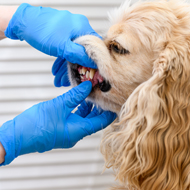More training needed on dog nail clipping, RVC says
The insights could lead to more tailored, breed-specific veterinary advice.
A new study from the Royal Veterinary College (RVC) has called for more training for veterinary professionals in providing nail care for dogs.
Despite overgrown nails being identified as the fourth most diagnosed disorder in dogs, RVC says it is one of the most underfunded areas of research.
To examine how demographic data affected nail clipping frequency, researchers from RVC, the University of Edinburgh and Scotland’s Rural College analysed data from RVC’s VetCompass programme. A random sample of 2,440 nail clipping cases was selected from over 2 million dogs in primary practice care during 2019.
The study suggests that 5.64 per cent of dogs get their nails clipped at least once per year as part of their primary veterinary care. Of these dogs, nail care was the primary reason of the visit of 59.4 per cent.
Among the most common reasons for nail clipping visits were overgrown or ingrown nails (12.66 per cent) and broken claws or dewclaws (8.84 per cent).
Through their analyses, researchers have also identified how differing dog breeds and body shapes may impact the nail care needs of such dogs.
In comparison to crossbreed dogs, the four breeds with the highest percentage of dogs getting nail clips each year were the Chihuahua (13.29 per cent), beagle (12.58 per cent), greyhound (11.98 per cent) and pug (9.36 per cent).
Flat-faced dogs, such as pugs and French bulldogs, were found to be 1.67 times more likely to have their nails clipped. Meanwhile longer faced dogs, such as greyhounds and whippets, were 1.32 times more likely to have their nails clipped than dogs with medium-length skulls.
Dogs with shortened, often twisted, legs (known as chondrodystrophic breeds) were also 1.44 times more likely to get their nails clipped than those with straight legs.
Researchers believe that these insights could inform more tailored, breed-specific guidance from veterinary practice. It calls for more comprehensive education into nail care in both veterinary and veterinary nursing courses.
RVC says this could reduce cases of overgrown nails, ingrown claws and their associated pains and infections.
Alison Skipper, veterinary and research advisor at the Kennel Club, said: "It's easy to overlook nail clipping as a minor intervention, but this study reminds us of the importance of providing good routine healthcare that improves canine lives.
“It's also interesting to see that some breeds are more likely to need nail care. This confirms anecdotal evidence that some foot shapes or lifestyles may influence nail wear and reminds owners to make sure they keep an eye on nail growth as they care for their pets.”
The full study can be found in the Journal of Small Animal Practice.
Image © RVC



 The WSAVA has invited veterinary professionals to a webinar on responsible antibiotic usage in dentistry.
The WSAVA has invited veterinary professionals to a webinar on responsible antibiotic usage in dentistry.